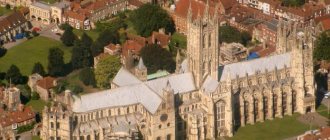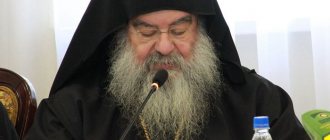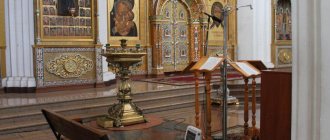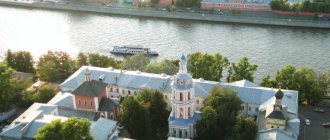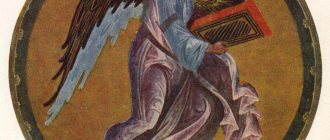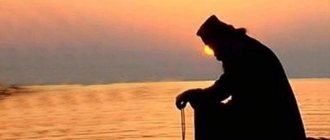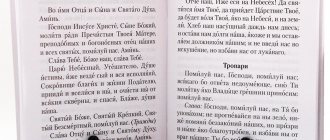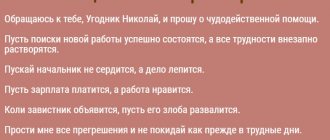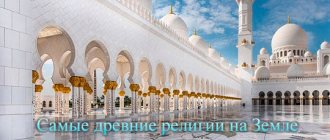In the Russian Orthodox Church there is a tradition of eldership, which dates back to the adoption of Christianity in Rus'. Elders in Orthodoxy are called clergy or monks who have high moral authority, spirituality, wisdom, and prophetic ability. In the world, such holy fathers are called miracle workers. Today, the tradition of eldership is also observed - there are visionary elders in Moscow and the Moscow region.
The tradition of Orthodox eldership today
Many people know about the miracle-working priests of the Orthodox Church who lived at different times in Rus'. They enjoyed great authority not only among ordinary people, but also among the political elite of different eras.
Famous Russian holy elders:
- Seraphim of Sarov;
- Sergius of Radonezh;
- St. Basil the Blessed;
- Alexander Svirsky;
- Daniil Moskovsky;
- Luka Krymsky.
Nowadays, few Russians know that the traditions of eldership are still alive. Just like hundreds of thousands of years ago, lay people line up to see the Orthodox elders, wanting to receive fatherly advice and support in difficult life situations. In the Orthodox Church, it is considered a great blessing to find a spiritual mentor who will always help you make the right decision, give wise advice, listen to confession, and help you cope with a serious illness.
Today in Moscow and the Moscow region, authoritative clergy of the Russian Orthodox Church, who have a reputation as spiritual, wise mentors with deep knowledge of patristic books, are ready to accept and listen to those who suffer. They have unique abilities, revealed through high spirituality and deep Orthodox faith.
If a person does not have the money to visit a perspicacious elder, one can contact a charitable organization of the Christian church. She will use donations to help organize an Orthodox pilgrimage to one of the living spiritual mentors in Moscow. Below is a list of visionary elders known for their advice and miraculous deeds.
***
To understand what the elder delivers souls from, you need to remember a fragment from Tolkien’s “The Silmarillion” about the valiant warrior Hurin, who was captured by the universal enemy. Unable to break the warrior through torture, the enemy resorted to other weapons.
“All that Morgoth knew of the works of his malice, Hurin knew also; but lies were mixed with the truth, and everything good was hidden or distorted. Anyone who looks at the world through the eyes of the enemy inevitably sees everything crookedly, whether he wants it or not.” The only way to gain the right view is to look at the situation from Heaven and see your pain in line with Providence, leading a person to joy. Then we will understand what we need to do now.
Elder Dionysius Kalambokas once told a nun that only those who trust in the love of the Lord are not afraid to live. And the elders give us the opportunity to look at everything that happens to us through the love of God.
One American woman, who came to Elder Ephraim of Arizona with her husband, said how her husband later exclaimed in surprise: “We visited psychologists and doctors, but no one could solve our problem. And the elder solved it in just one hour!”
Father Herman
A priest with the rank of archimandrite is the rector of the Church of Peter and Paul, which is located in Sergiev Posad. Father Herman is known for casting out demons from those possessed. Relatives of such people today turn to him for help, bringing their loved ones who are in this kind of trouble for reprimand.
Father Herman gained incredible fortitude, which allows him to drive out the devil from the possessed, through an ascetic lifestyle and the ability to curb his own emotions and instincts.
Father Vlasiy
A clergyman and a monk receive the laity at the Pafnutyevo-Borovsky Monastery. In the world he is known as the healer Vlasiy. The elder was able, with the help of his deep faith in Our Lord Christ, to heal himself from a terrible illness.
His entire personal life in the world was a feat of humility and forgiveness. At a young age, he took monastic vows and devoted himself entirely to serving God. Having learned about his serious diagnosis, Father Vlasiy went to Athos, where he wanted to spend his last days in prayer and asceticism. But a miracle happened - the disease subsided.
In 2003, the monk returned to Russia. He began to serve in the Pafnutyevo-Borovsky Monastery. Father Vlasiy is known for helping people who come to him with prayer and wise advice. There are many known cases of healing of lay people who asked him for help in difficult life situations.
“Monasticism in Siberia was tempered by work and prayer”
During a trip to the monasteries of the Novosibirsk Metropolis, we met with Bishop Pavel of Kolyvan, abbot of the Archangel Michael Monastery, vicar of the Novosibirsk diocese.
The once extensive Novosibirsk diocese, which occupied the entire territory of the Novosibirsk region, underwent significant changes in 2011. By the decision of the Holy Synod, three dioceses were separated from its composition: Kainskaya, Karasukskaya, Iskitimskaya. Together with the Novosibirsk diocese, they became part of the newly formed Novosibirsk Metropolis.
Over the past six years, the Novosibirsk Metropolis has raised 8 bishops, of which 2 are archbishops. Seven of the eight were previously residents of the Archangel Michael Monastery, located 80 kilometers from Novosibirsk, in the village of Kozikha, and known as the “forge of bishops.” “MV” talks with Bishop Pavel about this phenomenon, about the monastic path, about how to combine work and prayer in a monastery.
Dreams of Optina
Vladyka, please tell us how you came to monasticism?
I was born and raised in the village of Shchors, Kazakhstan SSR, on virgin lands, where everything was imbued with Soviet thinking. I didn’t hear anything about the Church from my relatives. But as far back as I can remember, I have always been interested in church topics. As a child, I accidentally heard somewhere that in the temple they give Cahors for health and this interested me (smiles). And only in the 10th grade did I find out that my great-grandfather was a priest, served in Stalingrad, was repressed in 1937, his further fate is unknown. Can you imagine how afraid people were in the Soviet years, that until the end of the 80s. my family were silent about it.
After school, I entered the Chelyabinsk State Technical University with a degree in “Design and technology of radio-electronic equipment.” My circle of friends during my student years was wide, I was searching for myself: I talked a little with the Hare Krishnas, read a book about them, Protestants propagated their teachings, I studied various philosophical thoughts. However, all this disgusted me.
For me, three components were important: purity, holiness, wisdom. Church seemed to me then something exclusively ritual - candles, grandmothers, priests. The soul demanded more. But over time, when my mother and aunt were baptized, I began to read the Gospel. First I read the Gospel of Matthew. It seems clear, then I read it again, nothing is clear anymore, the events repeat themselves, but it turned out that I had already read a different Gospel. Then Lopukhin studied the history of the Old and New Testaments. Gradually, Orthodoxy became more understandable and interesting to me.
Already in my second year I was baptized, very consciously. Over time, I came to one of the Chelyabinsk churches to the priest and said that I wanted to learn more about our faith. The priest gave me a good catechist - Olga (she sang in the choir), who became my second godmother. Every Sunday I went to church. After Sunday service, I accompanied Olga home, which is about 10 kilometers. Throughout the journey, I asked her many questions, to which I received important answers. Our conversations were very interesting and useful.
During my student years I read many biographies of the Fathers of the Church. Olga gave me a book about Elder Ambrose of Optina, I read it five times. I began to lean toward monastic life, and even then I discovered that if you meet such a leader as Ambrose of Optina, you can give up everything and go to asceticism. Later I read books about other Optina elders, the collected works of St. Ignatius (Brianchaninov), the life of St. Seraphim of Sarov, the works of St. John Chrysostom, the “Teachings” of Abba Dorotheus, the Ladder and much more.
After graduating from university, I went to work as a radio engineer-technologist at a military plant in the city of Trekhgorny in the Chelyabinsk region. This town was supplied by Moscow, culture and sports were at the highest level, there was no crime. Naturally, there was no temple in Trekhgorny; it was located in the mountains. I adapted: on weekdays I worked at a factory, and on weekends I went across the mountains to church in the neighboring city of Yuryuzan. Early in the morning, just before it was light, I left the checkpoint and walked straight up the mountain-wooded road to the temple. It made me delighted, those times are still fresh in my memory: rivers, forests, mountains, birds singing. Beauty!
When did you seriously think about monasticism?
I had a big dream - to see Optina Pustyn. I took a vacation and went to Optina for the Christmas holidays in 1997. This trip evoked a lot of emotions and admiration: I met monks for the first time, prayed at the relics, went to the graves of murdered brethren, and performed my first obediences. But I felt that I was still too weak to take tonsure.
In Optina I was able to communicate with Elder Elijah twice. Already at the second conversation, he asked me a question: “Why did you come to Optina?” I answered: “To the elder.” But Father Eli blessed us to go to the Trinity-Sergius Lavra, to Elder Naum.
I worked at the factory for the next six months and in the summer I went to the Troy-Sergius Lavra. Then both Father Naum and Father Kirill received us. It was not possible to get to Father Kirill; he was ill and took little, and Elder Naum was on vacation. Not seeing anyone, I prayed at the relics of St. Sergius and went home. Only six months later I visited Elder Naum for the Christmas holidays. I was worried because I understood that I would have to do what the priest said. The question of marriage periodically arose in my head, but in my heart I more wanted Elder Naum to bless me for monasticism.
The first question he asked me was: “Where are you from?” “From Chelyabinsk,” I answered. "What is your profession?" - he asked. I answered loudly so that everyone could hear, because I had something to say: “I’m a designer and technologist, I work at a military plant, I graduated from the university with straight A’s.” Father answered: “So, here’s a pen and a piece of paper, write the formula that calculates the frequency of oscillations of the electromagnetic circuit.” Of course, I knew the formula, but I forgot it before the elder, although now, 20 years later, I remember it. An elementary formula, but in front of Father Naum I completely forgot everything. He smiled: “Okay, draw a block diagram of a heterodyne receiver.” And imagine, it also flew out of my memory. I lowered my head and said: “Father, forgive me, I forgot.” Then he publicly says: “Well, he’s a bad student, he probably bought a diploma. It’s clear that science is not your path, you need to study spiritually, bring the level of spiritual education to the level of secular education. Did you pass through Novosibirsk when you came here?” I said that Novosibirsk is on the other side, in Siberia. I myself really wanted to go to Optina, and asked the elder: “Can I go to Optina?” The priest concluded: “Why should I bow to you, go to Novosibirsk.”
Siberian hardening
So you ended up in Siberia?
Immediately upon returning to Trekhgorny, I began to find out about the trip. I took two weeks off in February 1998 and went to Novosibirsk. And here there is a snowstorm, the famous February snowstorms, snowdrifts higher than the rooftops - these were my first impressions of Siberia.
I was sent to the village of Kozikha. I remember the brothers were building something, wearing something, not talking much, and were increasingly silent. I was introduced to Hieromonk Artemy (Snigur, now Archbishop of Petropavlovsk and Kamchatka), noting that he was the eldest here. We talked with Vladyka for an hour and a half. In this conversation, in fact, he gave me a program for the rest of my life, saying: “We are building churches in Siberia, but we still need to build a temple in our hearts.”
In Kozicha I first lived as a pilgrim. The first obediences were difficult. One day my brother and I were given the task of bringing water to the bathhouse. And the pump is one kilometer away from the monastery. They gave us two flasks for each sled. The senior comrade said that we would rest until six in the evening, but I did not listen and decided to carry bricks all day.
Evening came. It's time to go get water, but I don't have the strength. It's dark outside, there's a snowstorm, the roads are swept, the sleds won't move. My partner began to help me: first they carried his sled, then mine, and part of the way they carried the flasks on themselves, and so on several times. I returned to my cell covered in snow, completely exhausted. At that moment I made a discovery for myself that one must show obedience in everything.
Vladyka Artemy began to humble me. One day I was given tarpaulin boots for work, and before putting the boots into the warehouse, I decided to wash and polish them. Father Artemy was going to Novosibirsk at that time and told me the exact time when I should stand by the car. While I was cleaning my boots, I was a few minutes late, and all the way to Novosibirsk I listened to a reprimand about why I was late. And already in the city, the bishop asked me: “Well, will you come back?” I promised.
A couple of years later, I found an entry in the monastery diary: “The pilgrim Alexander came from Chelyabinsk, performed such and such obediences, left, promised to return. Let's see…"
How long did you stay in the monastery as a pilgrim?
Two weeks. And, despite the fact that the conditions were difficult, spartan (the cell had adobe walls, half the space was occupied by a stove, where we slept), I really liked it in Kozikha. I realized that this was what I had read about in patristic literature: the modern brethren lived and labored in remote Siberia, just as it was written about in the monastic lives.
After the morning rule, Liturgy and breakfast, all the brethren went to work - until 20.30. There was not enough sleep, there were no days off. Only twice a week was it possible to rest a little: on Thursday evening (bath day) and on Sunday after the service.
Was there still a convent in Kozicha at that time?
Yes, the brothers helped with the construction there. The men's monastery was located in the village of Maloirmenka, 20 kilometers from Kozikha, where the convent is now located. In Kozikha there is more space, large equipment could enter the territory, but in Maloirmenka everything is very compact. Therefore, as soon as the construction work was more or less completed, in the summer of 1998 the monasteries were swapped.
Vladyka Pavel, how did your parents react to your choice of life path?
I once read that you need to take a blessing from your parents to become a monk, and I went to Kazakhstan to get it. There are several brothers in our family, but only I had a higher education, so I was considered hope for my parents, they thought that I would eventually “raise” the whole family, that we would be able to get out of poverty, but here is such news - monasticism.
Mom agreed almost immediately, but dad was perplexed: “I don’t understand you. You will work for someone. But you’re an adult, decide for yourself.” It was only later that my parents arrived at the monastery, and my dad saw that the governor worked harder than us, that the brethren were all hard workers. Dad himself worked with us (he is a builder by profession), calmed down and went to confession for the first time. This was a great consolation for me. What happened is what they say when a person goes to a monastery: the whole family begs, and the Lord helps the monk’s relatives. So my relatives began to slowly become church members.
It turns out that your tonsure took place in Kozicha?
I arrived at the monastery on March 19, 1998, and in July I was tonsured into the mantle by the abbot of the monastery, Hieromonk Artemy (Snigur) with the name Pavel, in honor of the Apostle Paul.
Construction of the soul
You have seen a period of active construction at the monastery. How do you remember him?
Basically, all my first obediences were related to construction: there was a lot of construction going on in Kozikha at that time. Something was moved from one place to another, bridges were built from sleepers - at night, under flashlights and searchlights. The fact is that often the work did not stop until the morning; this was called “turning on the light bulb.” Those who didn’t know and asked what it was, were told: “You’ll find out in the evening” (smiles).
In winter it reached minus 27 degrees, however, the brothers continued to work in the cold: brick, masonry, concrete, mortar. Wearing mittens and sweatshirts, but they coped with the assigned tasks. That’s how Father Naum’s wooden house was built – within 24 hours, when they were expecting him to visit: they started at 9.00 and finished by the next morning.
Vladyka Artemy once served in the army, so he taught us to do everything in a military way - quickly, quickly. Of course, many could not stand the difficult conditions and left, not realizing that this was how it should be. I compared our problems with what I read in books and realized that monks have gone through similar trials at all times.
Later I was appointed cellarer, and during this obedience I was also helped by reading about monasticism, which I was interested in as a student. However, I was at a loss as to what and how to make: pickles, preparations, and so on. I knew that when they give difficult obediences, you cannot refuse, you need to take on any work. Not understanding where to start, I saw an empty flask in the kitchen (and there should be water in it) and went to get water. Vladyka Artemy drove by in a Niva, stopped and asked: “So, did you decide to start with a flask? This is right".
Then I began to build storage facilities for vegetables, warehouses for raw materials, asked advice from knowledgeable people and gradually mastered the obedience of a cellarer.
The construction of temples and monastery buildings was at that time the main task in the monastery. You have a lot of experience in this. Share your thoughts and conclusions obtained over many years of practice - how can a monk combine work and prayer?
For many years, in difficult conditions, we were engaged in construction, not only on the territory of the monastery, but also in nearby villages - we built churches so that every resident had the opportunity to come to God. However, construction did not prevent us from serving the Lord; we prayed, as they say, “on the job.”
The brethren confessed regularly; during construction, the confessor walked around the territory of the monastery with an epitrachelion. This is how we lived for many years. We prayed during the work process and attended Liturgy every day. And when the period of large-scale construction ended, it was decided that all the brethren would attend all monastic services.
Vladyka, have you always been obedient in the monastery?
For almost four years, with the blessing of the monastery’s holy archimandrite, Bishop Tikhon, I served as a full-time priest at the bishop’s metochion in honor of the icon of the Most Holy Theotokos “Quick to Hear” (Mochishche station, Novosibirsk region). Then I was returned to Kozikha as a dean, and again I had to delve into economic issues.
Monks don't discuss orders
How long have you been the abbot of the monastery?
In May 2012, Bishop Tikhon appointed me acting governor, and in October of the same year, by the decision of the Holy Synod, I was appointed to the position of governor (abbot).
And literally four years later you were elevated to the rank of archimandrite and ordained bishop of Kolyvan. I have heard a lot about the phenomenon of “bishops from Kozikha”, please explain what is the point?
It’s not our fault, the bosses know better (smiles). Our diocese was being disaggregated and new candidates were needed. Although we worked a lot in the monastery, all the monastics managed to receive an education by correspondence. We graduated from the Tomsk Theological Academy, then some of the brethren graduated from the Kyiv Academy, and others from the Moscow Academy. In addition, the entire first echelon of monks had already arrived at the monastery with higher secular education. We have a predominance of techies, builders, engineers, there are nuclear physicists, but there are almost no humanities specialists.
Therefore, probably due to the fact that we successfully completed the “young fighter course” at a construction site and received physical and spiritual Siberian training, initially had construction abilities and already had some experience, Bishop Tikhon considered us capable of carrying out hierarchal service. But monks, like soldiers in the army, do not discuss orders. Monks are also warriors, but they are warriors of Christ. And if the soldier who does not dream of becoming a general is bad, then the monks are not looking for the bishopric. The main thing in monasticism is to overcome your passions and thus try to get closer to Christ.
When His Holiness Patriarch Kirill ordained me, he noted that during this time Kozikha gave more bishops than the large monasteries of central Russia. He often wondered: “What kind of Kozikha is this in Siberia?” (smiles).
Do the Kozikha bishops serve in Siberia or are they distributed throughout Russia?
They stayed where they were and dispersed around the country. Our rulers mainly inherited the northeast of Russia - Kamchatka, Chukotka, Salekhard. These are people accustomed to obedience in harsh natural conditions. Of course, it is easier to send a person to the North who is familiar with Siberian winters and frosts first-hand.
If we compare monasteries in the European part of Russia and those in Siberia, do harsh climatic conditions affect monastic life and rules?
I haven’t been to many places and it’s difficult for me to judge, although I heard from Patriarch Kirill and other bishops that the priests of Siberia have a certain hardening, steel; in the North they are hardened for life. In Siberia, a monk works in the summer so as not to die of hunger in the winter: he must have time to prepare coal and firewood, because there are very severe frosts.
The bishops and I often recall our monastic youth, when there was burning and everything was within our reach, where, with God’s help, it seemed we could do anything. Of course, everyone’s health is like after combat: spines, joints, hernias. But, as Elder Ambrose of Optina said, “it is not useful for a monk to be completely healthy, but he can be treated.”
The rules in our monastery have not changed for 20 years. The day begins with a prayer service to the Most Holy Theotokos in front of Her “Iveron” icon; then the morning prayers are read, the midnight office, three canons with an akathist, two chapters from the Apostle, the chapter of the Gospel, the 3rd and 6th hours, the Divine Liturgy is served. At 17.00 Vespers and Matins, 1st hour, evening prayers and the rite of forgiveness, during which the brethren and I ask each other for forgiveness. The brothers try to confess every day.
Several times a week in the evenings, joint readings of the Philokalia and other patristic books about monastic life are held. On Tuesdays we have a fraternal day, when everyone puts aside their affairs and concerns and engages exclusively in soul-helping work. On this day, our confessor, Abbot Seraphim, comes to us and reads an ascetic sermon. After breakfast, we conduct spiritual studies for an hour: we study the ascetic fathers, the works of St. John Chrysostom, and the canonical rules of the Church.
People who often come to Kozicha note that we have a family atmosphere in the monastery, with warm relationships between the brethren. But this is their opinion, I myself cannot compare.
Are you friends with the locals?
Yes, we live together, especially since many in Kozikha remember how the construction of the monastery began. At first no one believed that we could build it, but now sometimes they ask for advice, they come to services, they are already accustomed to us.
How many brethren are there in the monastery now?
About 50 people. In general, over the years of the monastery’s existence, more than a thousand people came to Kozikha. I repeat, many could not withstand the physical exertion and left for other monasteries. Today, our main activity is prayer.
And for what purpose were the farmsteads created?
Farmsteads are, first of all, feeding the local population, a type of missionary work. On Sundays, some of our monks go to churches and farmsteads for obedience. A married priest will not go to a village where the income is 200 rubles a month, not even 1000. What priest can stand this? But feed the monk, and he will go and build a temple.
The Novosibirsk Metropolitanate has a special missionary train and a temple ship. Do monastics take part in these projects?
We send our representatives there if we are asked to do so, but mostly we invite them to us. In Novosibirsk, a low percentage was recorded in the choice of the subject “Fundamentals of Orthodox Culture,” so we decided that we needed to work with school principals. We have already had 80 directors visit Kozicha, we greet them with the ringing of bells, take them to the church, where the brethren sing, demonstrate the historical development of church chants, which brings tears to some of their eyes. Then the directors light candles and write notes. In the refectory we feed them monastery borscht, unleavened bread and fish from our pond; we show a Russian stove, and the barn acts as a petting zoo. This is how we become friends, and gradually the situation in schools changes for the better.
Learn silence
After your consecration, how often do you come to Kozicha?
I try to be there twice a week: on Tuesday (Brotherly Day) and on Saturday. These days, the confessor confesses and instructs in the monastery.
Is it difficult to combine positions?
The load is heavy, but with God's help we can cope. I also have a parish in Novosibirsk, a Sunday school, and a gymnasium. There are helpers, but they still need to be trained and raised. The brothers are all good, proven, after 20 years we already know who we can trust. Everyone’s character is different, we have many shortcomings, we are all filled with weaknesses.
What other problems do monastics face?
Silence is not enough for us. Over the years of construction, the brothers have become accustomed to communicating. So, we are learning to remain in hesychia (smiles).
Your parting words to MV readers.
Monasticism is the happiest life. We need to rejoice that the Lord gave us such a life and good mentors. I always remember the words of the Holy Apostle Paul to his young children: “You can get married, get married, but I feel sorry for you, you will have sorrows in the flesh.”
In the world, a person is exhausted, and has nothing in return. He works and works, but vanity eats everything up. In the monastery, at first glance, there is also a lot of work and bustle, but there is a different mood. The monk strives for the glory of God, and understands that while he works and prays, the Lord is working with his soul. Therefore, anyone who wants their soul to be cleansed and beautified should go to a monastery. But first we must read the works of St. Ignatius (Brianchaninov), the Optina elders and others.
I wish the monks to hold on and pray, and for the laity to read the holy fathers, visit the monasteries as pilgrims, live there, and see. You must understand that the purpose of life in a monastery is the correction of your soul. Let us remember the words of St. John Climacus: “The light of monks are angels, and monks are light for all people; and therefore let them strive to be a good example in everything, “causing no one to stumble in anything,” either in deed or in word (2 Cor. 6:3).”
Father Iliy Nozdrin
The elder serves in the Church of the Transfiguration in Peredelkino. He is known among the laity as the "messenger of God." Many who spoke with Elder Ilya Nozdrin indicate that incredible peace and inner light emanate from him. Pilgrims claim that for a long time after communicating with this monk they feel the influence of his light power.
Novices and laity say that Father Ilya Nozdrin almost immediately understands the trouble with which a person came to him, and provides spiritual support in solving the problems that have arisen.
Amphilochius of Patmos
Beauty and truth manifest themselves as tenderness towards people. Callistus Ware gives the following story about his elder Amphilochius of Patmos. Already departing to God, the elder, “saying goodbye to the nuns whom he cared for, asked the abbess not to be too strict with them: “They left everything to come here, and they should not be unhappy.” And one European writer, who revered Elder Amphilochius, knowing about this request to the abbess, told the husbands he knew about their wives: “Remember that she abandoned everything and came to you because she believed that you would make her happy...”
